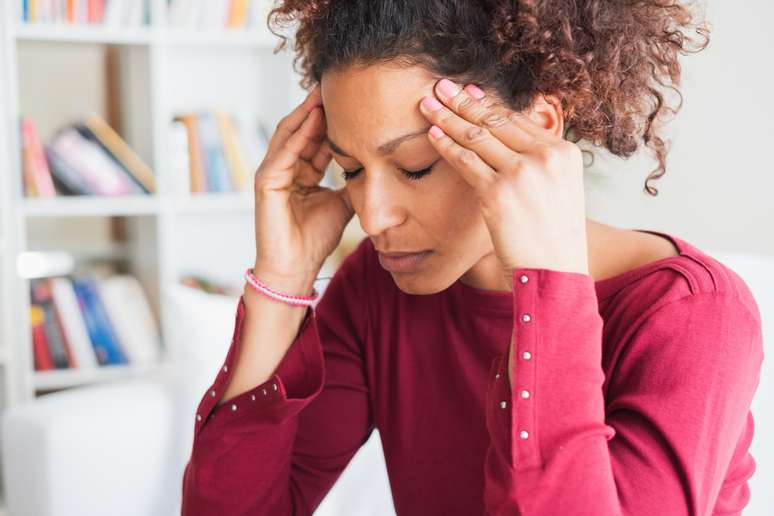Hormonal changes may explain why the problem is more common among them
Women tend to have more headaches than men. A recent survey conducted in the United States, among others, suggests that they are almost three times more likely to report discomfort due to this type of pain or due to migraines.
Although many factors contribute to this difference between the sexes, studies indicate that hormonal changes that occur throughout the month are among the main causes.
Migraine
One of the main types of headaches is migraines. It is characterized by moderate to severe pain, usually on one side of the head, and is one of the most common causes of disability among women aged 15 to 49. Attacks can last from four to 72 hours.
Before puberty, boys and girls are equally likely to suffer from migraines. But once puberty is reached, the condition becomes much more common among women and girls.
Women are two to three times more likely than men to suffer from migraines, says Dr. Jelena Pavlovic, a neurologist at the Albert Einstein College of Medicine, in a report to The New York Times. And this type of headache usually hits women in their 30s hardest.
Another possible reason for this discrepancy is that women tend to report having more stress, due to “professional, social or family” obligations. They also tend to have more difficulty sleeping than men, which only increases the risk of headaches.
The role of estrogen
Some migraines, however, are triggered by hormones, or rather, by sudden changes in estrogen levels, produced mainly by the ovaries.
Scientific studies have shown that estrogen plays an important role in the development of migraines, which, between puberty and menopause, are much more common in women than in men.
Many women, for example, suffer from migraines before and during menstruation, immediately after estrogen levels decrease. Research has also found that women who suffer from migraines tend to have more pronounced drops in estrogen levels than women who don’t suffer from migraines.
Estrogen performs important functions within the brain, so hormonal changes must also trigger a series of events that culminate in a migraine.
Pregnancy and menopause
Women may also experience changes in migraine frequency during pregnancy, when estrogen levels tend to rise and fall.
Additionally, migraines tend to worsen during perimenopause, partly due to fluctuations in estrogen. However, once menopause begins, hormone levels stabilize and many women find that their migraines become less frequent.
More headaches
In addition to migraines, women are about 1.5 times more likely than men to suffer from tension headaches, which are mild to moderate and affect both sides of the head. These headaches are annoying but usually not debilitating and may feel as if there is a tight band squeezing your head.
Some studies suggest that these headaches are more frequent in women in the days surrounding menstruation, suggesting that estrogen may be involved again. But other studies find no evidence that hormones are to blame, and stress may also be involved.
Cluster headache
On the other hand, men are more likely than women to suffer from cluster headaches, which are rare but extremely painful headaches that affect only one side of the head and usually occur daily or almost daily for several months, weeks or months.
It’s unclear why men are more prone than women, but research suggests that these headaches are more common in people who smoke or drink heavily, and men tend to drink and smoke more heavily than women.
What to do?
If you suffer from frequent headaches, keep a diary and take it to a specialist. In addition to stress, sleep, and hormones, consider other potential triggers, such as dehydration, climate change, medications, and alcohol.
The National Headache Society suggests documenting when each headache started and ended, its intensity, previous symptoms, its potential triggers, and any medications taken to relieve it. A doctor can then adapt treatments based on the recorded information.
Source: Terra
Ben Stock is a lifestyle journalist and author at Gossipify. He writes about topics such as health, wellness, travel, food and home decor. He provides practical advice and inspiration to improve well-being, keeps readers up to date with latest lifestyle news and trends, known for his engaging writing style, in-depth analysis and unique perspectives.








